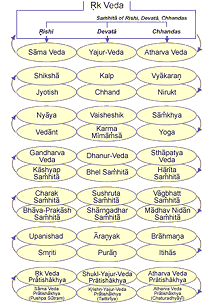| |
 |
 |
|
|
|
 |
 |
 |
 |
|


Sama Veda is one of the structuring
dynamics of Rk Veda. It highlights the quality of FLOWING
WAKEFULNESS involved in structuring Rk Veda. With reference
to consciousness, Sama Veda comprises the specific sets of
laws of Nature that are engaged in promoting the quality of
Rishi — the observer, the witnessing quality — within
Samhita level of consciousness, providing a structure to the
eternally silent, self-referral, self-sufficient, fully awake
state of consciousness, which is intimately personal to everyone.
(complete table of qualities)
|
 |
 |
 |
|
Sama
Veda is the sum total of all that is
pertaining to Samhita with a predominance of
Rishi — observer value. Sama Veda represents
the totality of the sensory systems and
perceptual apparatus, including receptors,
channels, pathways, and the structures
involved in organizing, maintaining balance,
and identifying and decoding inputs and
information.
The wakeful physiology receives all the flow
of experience through these channels. They
sustain the quality of flowing wakefulness.
 |
 |
 |
 |
 |
 |
— Prof. Tony Nader-Ram in Human
Physiology: Expression of Veda and the Vedic Literature,
pp. 66
|
|
|
 |
|
 |
 |
 |


|
| |


|
 |
|
|
 |
 |
 |
 |
 |
 |
Maharishi Mahesh Yogi
on the importance of
regular practice of the
Transcendental
Meditation technique:
|
 |
The self-referral process of evolution,
displaying
self-referral dynamism due to Rishi, Devata, and Chhandas,
and eternally maintaining this dynamism on the eternally
silent ground of Samhita, presents the coexistence of
eternal silence and eternal dynamism within the nature of
self-referral consciousness — dynamism and silence
coexisting within the nature of Transcendental
Consciousness.
The structure of Veda, the sequential
unfoldment of sound,
which at the same time is the sequential unfoldment of the
form (of the sound), is the sequential unfoldment of Shruti,
that which is heard by self-referral consciousness, and
Darshana, that which is seen by self-referral consciousness.
— Introduction to Maharishi Vedic University, pp.
316-317
|
| |
 |
 |
 |
Learn the TM technique
|
 |
 |
 |
Click on a branch of Vedic Literature
to access the pdf files

|
|
|